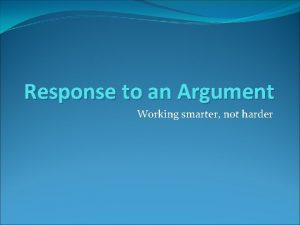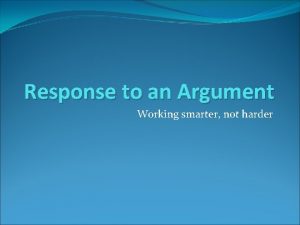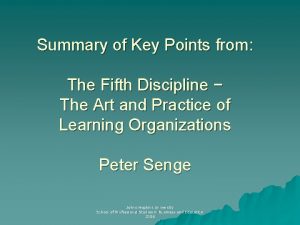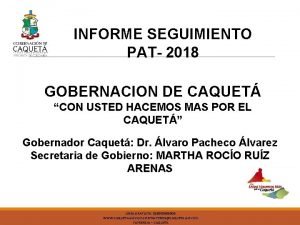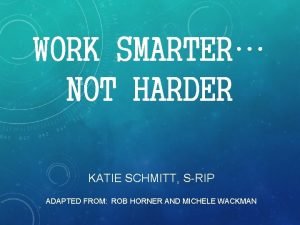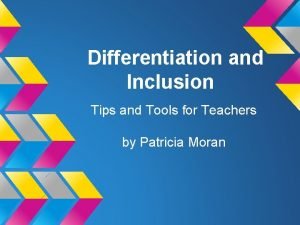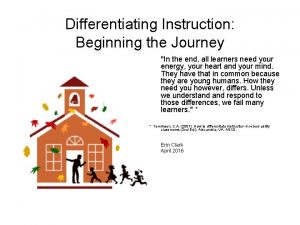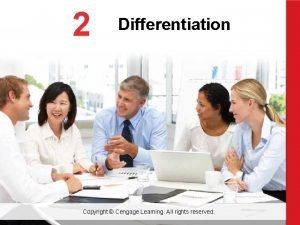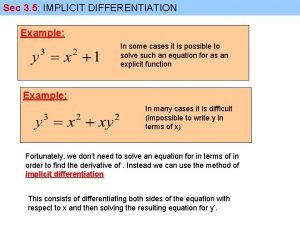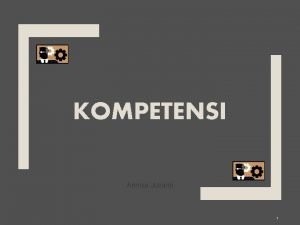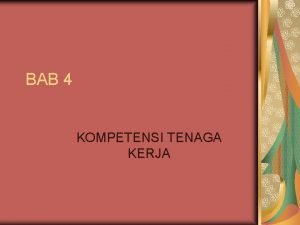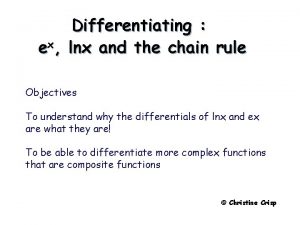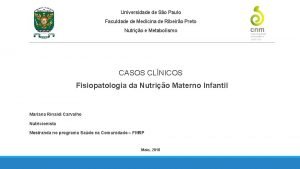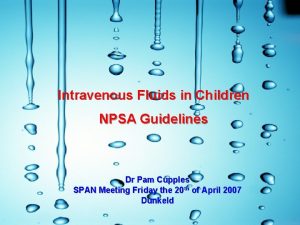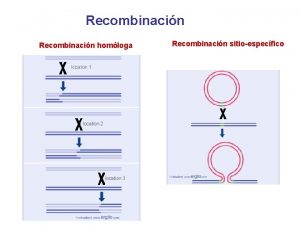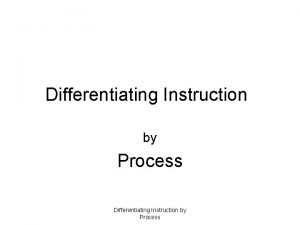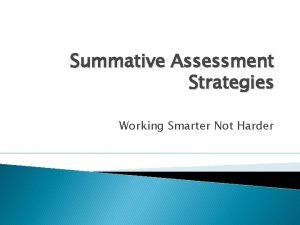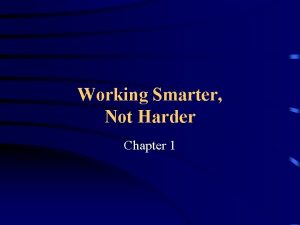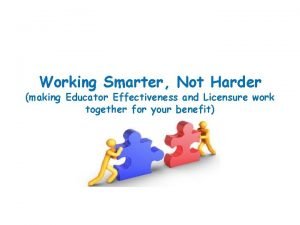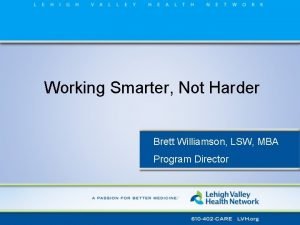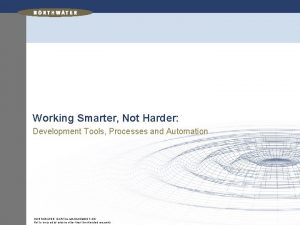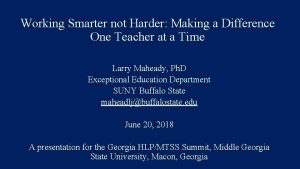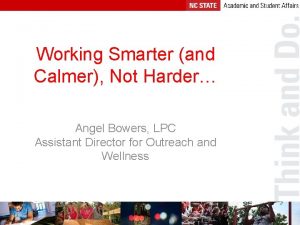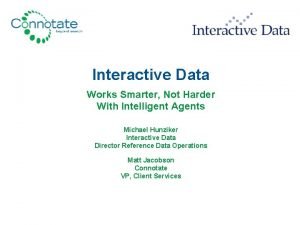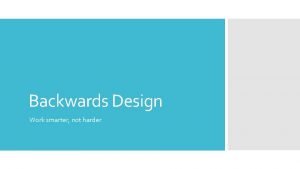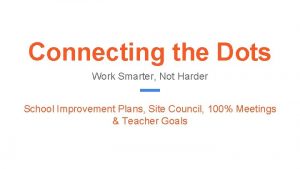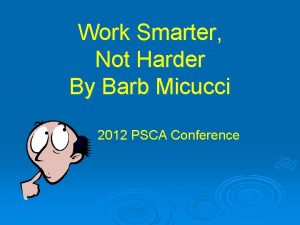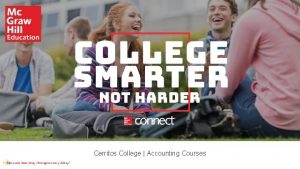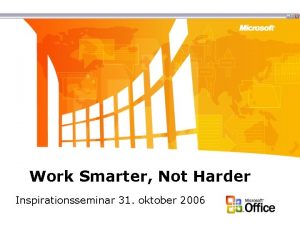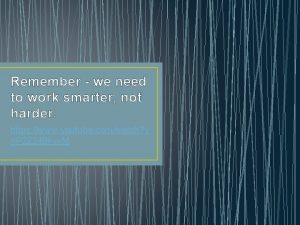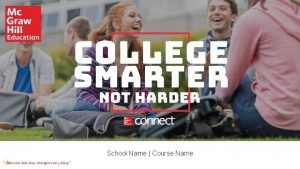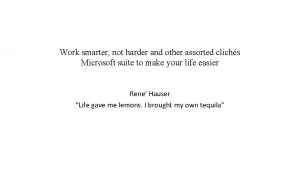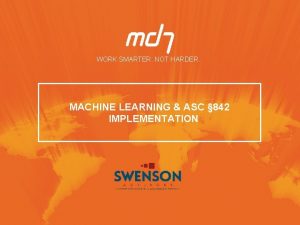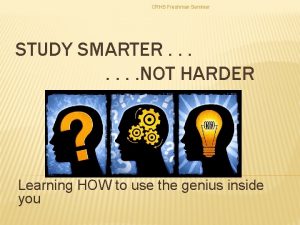Working Smarter Not Harder Differentiating Instruction Pat Holliday



























- Slides: 27

Working Smarter, Not Harder: Differentiating Instruction Pat Holliday Angela Szakasits 1

http: //www. youtube. com/watch? v=l ul. Uv. Yf. Rl_c

Our objectives for this workshop are to: • Provide an overview of Differentiated Instruction • Share several strategies for how you can differentiate in your classroom • Think of ways you can turn your classroom into a Differentiated Classroom • Answer any questions that you might have 3

What is Differentiation of Instruction? Differentiating instruction is a teacher’s response to the learner’s needs It is when a teacher begins where his or her students are and not in the front of the curriculum It is how a teacher provides specific ways for each student to learn as deeply and quickly as possible 4

Why Differentiate the Instruction? • Not all children learn at the same pace or in the same way. • Some children have already mastered concepts and skills. • Not all children are “turned on” to learning unless they are interested and challenged. 5

The Basic Elements of Differentiating Instruction • Students participate in authentic assignments ⁻ ⁻ ⁻ readiness interest learning profile • Ongoing assessment is a must ⁻ assess students in multiple ways ⁻ be flexible, adjust as necessary • Most importantly-DIFFERENTIATION is not something you do every day, all day 6

How to differentiate • Content – Concept-based – Authentic – Transferable • Process – Concept-driven – Balancing critical and creative thought – Purposeful • Product – Concept-centered – Application of all key skills and understandings – Multiple modes of expression

Content Differentiation • Honors/AP vs. regular curriculum – Depth of the study of the topic • Contracts • Compacting • Group investigations

Independent/Learning Contracts • Contracts are negotiated agreement between teacher and student that give the student opportunities for choice and freedom of acquiring skills. • This is the perfect opportunity to integrate other subject areas and multiple intelligences.

Examples of Independent Contracts Adventure Contract Hatchet Island of the Blue Dolphins The Outsiders

Compacting • Encourages teachers to assess students before beginning a unit of study or development of a skill – Document what the student knows – Document what the preassessment indicates the student does not know – Plan for meaningful and challenging use of the student's time- students need to “buy in” 11

Methods of Compacting Grammar pretests-option (less grammar tests to grade) Math pretests-enrich (a step up in the curriculum or pull challenge activities from the textbook) Pretest of focus skills or content-think about what information needs to known at the end of the unit

Group Investigations • Students are grouped based on learning interest • Choose a topic to research or investigate further • Research or investigation is carried out through a varying complexity of research materials

Example of Group Investigation Topic: Oil spill Given the topic, students would determine what they want to investigate, how they will carry out their investigation, what resources they need, and any other pertinent information.

Process Differentiation • Tiered Assignments • Learning Centers • Literature Circles

Tiered Assignments • Use when you want to ensure students with different learning needs work with the same essential ideas and key skills ‾ Vary the level of activities on the same concept ‾ Use a variety of resources and materials at different learning levels and use a variety of learning modes ‾ Assure appropriate level of challenge ‾ Be sure there is clear criteria for quality and success 16

Examples of Tiered Assignments • Government: How the Bill of Rights has expanded over time and its impact on various groups in society ‾ Examples of issues research groups could study: how one or more amendments in the Bill of Rights became more inclusive over time and court decisions that redefined one or more amendments ‾ Struggling readers, grade level readers, and advanced readers ‾ Groups will investigate the topic using resources to match their reading readiness and/or familiarity with the topic 17

Learning Centers A learning center is a classroom area that contains a collection of activities or materials designed to teach, reinforce or extend a particular skill or concept. • Learning centers should focus on: – Using materials and activities that address a wide range of reading levels, learning profiles and student interest; – Provide clear directions for students; – Focus on important learning goals; – Include instructions about what a student should do if he needs help; – Include a plan for on going assessment (observation and rubric). 18

Example of Science Learning Centers Topic: Plant cells vs. animal cells Students should view a variety of cells with particular emphasis on the differences between plant and animal cells. Students will rotate through each of these three centers: Center # 1 - Students will view sample plant and animal cells using a microscope. Compare and contrast. Center # 2 - Students will complete an internet scavenger hunt with questions pertaining to animal and plant cells using the Cells Alive! website. Center # 3 - Students will create a 3 D model of a plant or animal cell.

Literature Circles • • Many, many ways to do these Use various levels of questioning Literature Circle questions Literature Circle reflection sheet

Product Differentiation • Multiple Intelligences-based • Menu/choice boards • Independent study or community-based product

Multiple Intelligences and Choice Boards • Choice board activities are excellent places to incorporate multiple intelligencebased activities • Getting to Know You • The Outsiders Choice Board

Independent Study or Community-Based Products • Students choose their topic based on their interests. • Benefits – Pursue topics of interest – Identify intriguing questions – Develop plans to complete investigation – Set goals, criteria, and deadlines – Present information to audience in format of choice • Graduation Project

How does this apply to your classroom?

Final Advice for Differentiating Instruction Start small. Let go of control. Teach the students to bake the cupcake before adding the sprinkles. Encourage students to become a problem solver. Step back and reflect. It’s okay to make mistakes.

Questions !!!!!

Resources The Differentiated Classroom by Carol Ann Tomlinson, 1999 Differentiated Classroom
 Work smarter, not harder essay
Work smarter, not harder essay Work smarter not harder passage
Work smarter not harder passage The harder you push the harder the system pushes back
The harder you push the harder the system pushes back Pat pat seguimiento
Pat pat seguimiento Working smarter matrix
Working smarter matrix Knapp intensifying stage
Knapp intensifying stage Differentiating process examples
Differentiating process examples Product differentiation
Product differentiation Differentiating content
Differentiating content Differentiating acceleration
Differentiating acceleration Derivative of arctan
Derivative of arctan Implicit differention
Implicit differention Contoh differentiating competencies
Contoh differentiating competencies Contoh differentiating competencies
Contoh differentiating competencies What is security market index
What is security market index Exlnx
Exlnx Uses of security market indicator series
Uses of security market indicator series Differentiated instruction vs individualized instruction
Differentiated instruction vs individualized instruction Direct instruction method
Direct instruction method Hard work vs smart work
Hard work vs smart work Cold working
Cold working Hot working and cold working difference
Hot working and cold working difference Differentiate between hot working and cold working
Differentiate between hot working and cold working Pengerjaan panas dan dingin
Pengerjaan panas dan dingin Sadlier vocabulary workshop level d unit 1
Sadlier vocabulary workshop level d unit 1 Diagnóstico nutricional exemplo
Diagnóstico nutricional exemplo 4 2 1 rule fluids
4 2 1 rule fluids Depurinacion
Depurinacion
